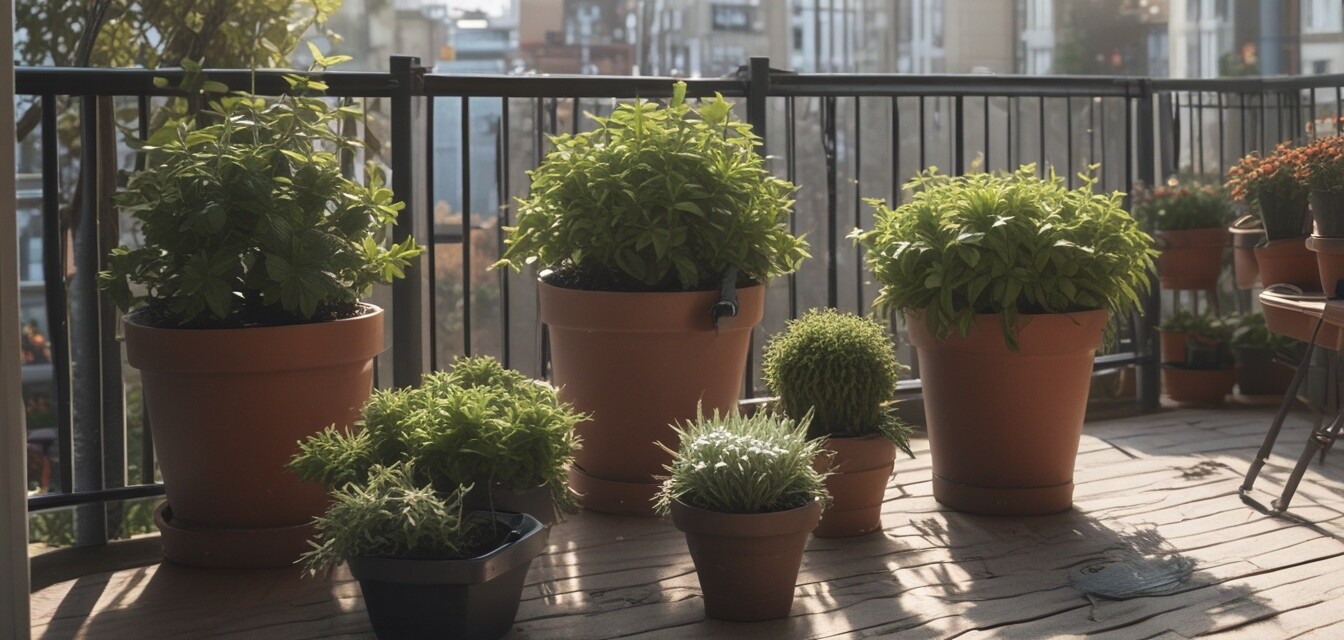
Best practices for winterizing your container plants
Key Takeaways
- Understanding the importance of winter protection for container plants.
- Effective techniques like insulation, strategic placement, and soil management.
- Recommendations for specific products to aid winterizing.
As winter approaches, it's essential to take extra care to protect your container plants. Container gardening is an excellent solution for urban dwellers, but it comes with challenges during cold months. Preparing your balcony garden for winter will ensure your plants remain healthy and vibrant when spring arrives. Here are best practices to help your garden thrive through the colder season.
Why Winterizing is Important
Container plants are more susceptible to temperature changes than those planted directly in the ground. When the temperature drops, the roots of potted plants can freeze, leading to plant death. By winterizing your container plants, you protect them from harsh weather conditions, allowing them to survive until they can be revitalized in the spring.
Techniques for Winterizing Your Container Plants
1. Choose the Right Location
Relocating your container plants before winter can significantly enhance their chances of surviving the cold. Follow these tips:
- Move pots closer to home: Position your plants against walls or near the entrance of your house where they are more sheltered.
- Group pots together: This creates a microclimate, reducing wind exposure and keeping your plants warmer.
2. Insulate Container Plants
Insulating your pots can prevent heat loss and frost damage:
- Use burlap or bubble wrap: Wrap pots with burlap or bubble wrap to provide thermal insulation.
- Add mulch: Applying a layer of mulch around the base of the plants helps retain heat and moisture.
3. Protect against Freezing Temperatures
Consider these methods to shield your plants:
- Frost cloths or blankets: Use frost cloths over plants on particularly cold nights.
- Move pots indoors: If possible, bring tender plants indoors during extreme cold spells.
4. Watering Strategies
Proper watering is crucial for wintering your container plants. Follow these tips:
- Keep them hydrated: Water your plants before a hard freeze to help keep the soil moist and prevent root damage.
- Avoid overwatering: Make sure not to overwater during winter, as this can promote root rot in cold weather.
5. Use Quality Potting Soil
Investing in a quality potting mix can make a significant difference. Consider using products like Houseplant Focus Repotting Mix. Here's why:
- It's peat-free and specially designed for indoor plants, providing excellent drainage.
- It contains nutrients to support healthy growth even during winter.
Best Products for Winterizing Your Plants
Using the right products can enhance your winter preparation. Here are our top picks:
The Garden Gecko Invisible Pot Feet
These robust pot risers keep your containers off the ground, improving drainage and stability during winter.
Learn MoreCommon Mistakes to Avoid
Beware of these common winterizing pitfalls:
- Neglecting to check for pests: Before winter, inspect your plants for any pests that could cause problems later.
- Using non-draining pots: Using pots without drainage holes can lead to waterlogged soil, especially in cold weather.
- Over-mulching: Too much mulch can suffocate roots; a thin layer is usually sufficient.
Final Thoughts
Taking the necessary steps to winterize your container plants is key to ensuring their survival through the cold months. By implementing the practices outlined above, you can enjoy a thriving garden come springtime. For further insights on urban gardening, visit our article on Seasonal Balcony Gardening.
Pros
- Improved plant health and survival rate in winter.
- Efficient use of space in urban settings.
- Various methods to enhance the beauty of winter gardens.
Cons
- Requires effort and planning to properly execute.
- Possible costs associated with purchasing insulation materials.
